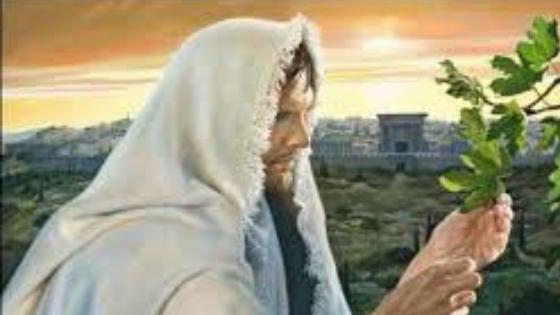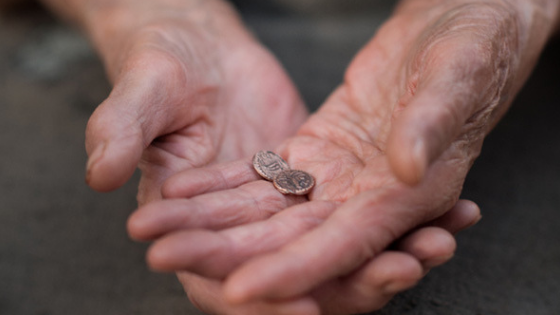
Easter Sunday (April 1, 2018)
Acts 10:34a, 37-43; Ps 118:1-2, 16-17, 22-23; Col 3:1-4; John 20:1-9)
Theme: Tell the Good News
Alleluia! Today, all over the world, the Church once again echoes the good news: “Jesus is risen!” In the Gospel by John, we learn about the discovery of the empty tomb and the reactions of those who first know about it.
It is the first day of the week while it is still dark, Mary Magdalene visits the tomb of Jesus. Identifying the first day of the week has been interpreted to the “dawning of a new creation, or to the eschatological time of fulfillment,” according to Bergant (2008). She also says that referring to darkness, rather than the dawn of a new day, may be John’s way of incorporating the light/darkness symbolism. Lack of faith is a life in darkness.
Seeing that the stone has been moved, Mary Magdalene, had a natural reaction. She thought the body of Jesus had been stolen; it was a case of theft and robbery. She seems not to have any thoughts of Jesus’ resurrection. But Mary has been a follower of Jesus and a brave one at that. She was one of the women who had followed Jesus from Galilee to take care of his needs. She was also a witness to Jesus’ death (Mt. 27:56; 43:49) and burial (Mt. 27-61; Lk 23:55).
She ran off to tell Simon Peter (hinting of his privileged status within the community). Also known as Cephas (John 1:42), Simon Peter was one of the first followers of Jesus Christ. He was an outspoken and ardent disciple and was one of Jesus’ closest friends. But in the passion narrative, he denied Jesus three times. And in the account of the discovery of the empty tomb, he was not the one who believed in the resurrection of Jesus.
It was the other disciple, whom Jesus loved, who saw and believed. This disciple is nameless in John and is not even mentioned in the other gospels. According to John, this was the disciple who leaned on Jesus during the Last Supper, and the only male disciple present at the crucifixion. And though his identity is one of the biggest mysteries in biblical scholarship, it is clear in John’s account that he is the only one who believed with little evidence.
Like Peter, he saw the linen wrappings lying there, and the cloth that had been on Jesus’ head, not lying with the linen wrappings but rolled up in a place by itself. We are not told what Peter thought about what he saw. But John says the beloved disciple saw and believed, making him unique for having resurrection faith from only the experience of the empty tomb rather than the appearance of the Risen Lord. He is the ideal disciple.
The reading ends with a sad note on the unbelief of the disciples, “They did not understand the scripture, that he must rise from the dead.”
But in the rest of John 20, we learn that later in the day Jesus first appears to Mary Magdalene (vv 11-20) who only believed after hearing his voice and in the evening Jesus appears before Peter and the disciples except Thomas (vv 19-23) and a week later Jesus appears before all the disciples including Thomas (vv 26-29). All believed after seeing Jesus. An empty tomb is not enough to believe; they had to see to believe.
The different reactions of those who were close followers of Jesus tell us of their humanity and of the human need to see more proofs to believe. From the reading in Acts, we learn that like the apostles, we have to preach and give witness to Jesus’ victory over sin and death. We are to testify too that the Risen Christ, as stated in our Apostle Creed, is the one appointed by God as judge of the living and the dead. But how do we bring the light of faith in an all too human world?
For Reflection and Discussion: 1. As Christians today with the challenge to tell and share the good news, do you need to learn more about your faith and undergo formation? If so, what do you need and what do you plan to do. 2). Share on how to tell stories of God’s love and being a witness so others may believe. 3) In your experience, what has been a good witnessing?
Bibliography: Bergant, Preaching the New Lectionary Year B (Manila, 2008); Harrington and Donahue, Sacra Pagina: The Gospel of Mark (Minnesota, 2002); Almazan, OFM, “Welcome to Our Bible Study: Passion Sunday B” (unpublished)
This week’s teaching commentary was prepared by
Minerva Generalao, Philippines Bat Kol Alumna July 2014
Email: may_neer@gmail.com
Copyright 2018
…………………………………………………………………
PLEASE NOTE: The weekly Gospel commentaries represent the research and creative thought of their authors, and are meant to stimulate deeper thinking about the meaning of the Sunday Scriptures. While they draw upon the study methods and sources employed by the Bat Kol Institute, the views and conclusions expressed in these commentaries are solely those of their authors, and do not necessarily represent the views of Bat Kol. Questions, comments and feedback are always welcome
…………………………………………………………………
Bat Kol Institute for Jewish Studies, Jerusalem
1983-2018
“Christians Studying the Bible within its Jewish milieu, using Jewish Sources.”
gill@batkol.info Website: www.batkol.info



